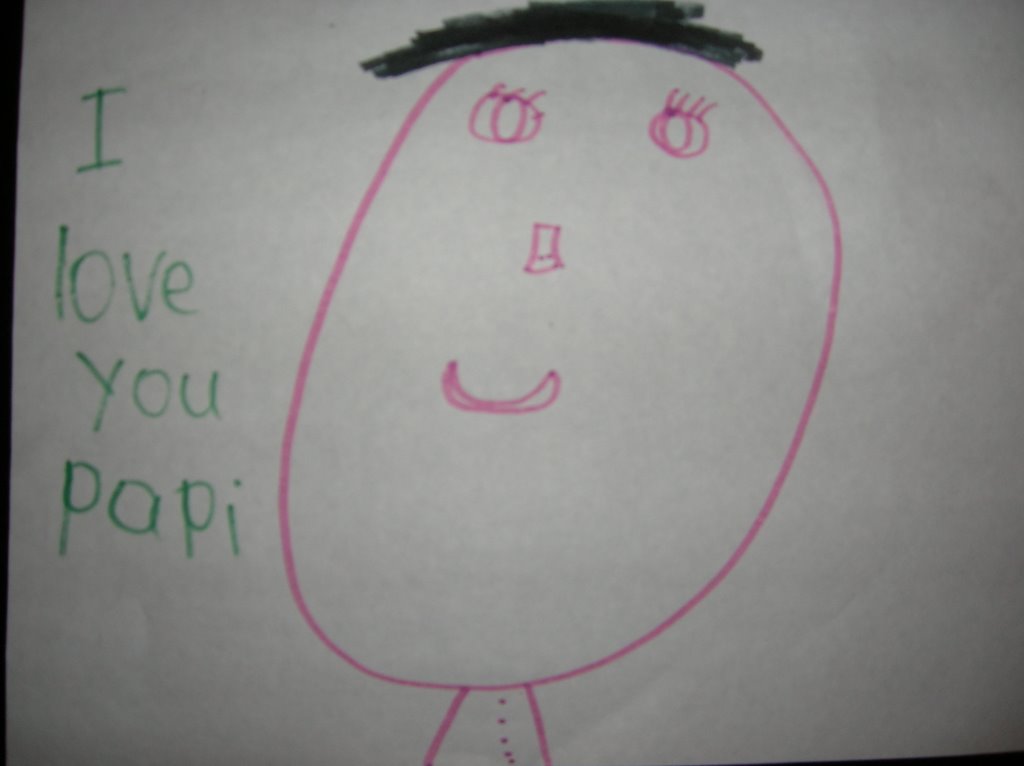On December 24, 1962, my parents, my sister, grandparents and several family members left on a ship called the African Pilot, after an agreement reached between the U.S. government and Castro. 1,113 prisoners, brave men captured after the failed Bay of Pigs Invasion were released, my uncle Jose Peruyero included. They arrived at Port Everglades in Ft. Lauderdale, FL. It's reported that over 1,000 of the prisoner's family members left Cuba on or around that Christmas Eve.
My grandmother embracing my uncle; a tearful reunion for a Pedro Pan family.
My dad says the night he left, everything moved fast. Some goon came to his door and told my parents to step outside the house. They were to take only a change of clothes. My mom packed a bag, the door was locked and police tape was put up to block re-entry. Later that evening my grandfather Tuti (aka Tito) jumped the backyard fence, broke in and took some extra clothes for my sister, then just barely a toddler.
That night they headed to the African Pilot, never to return to Santiago de las Vegas. The town my dad knew since childhood. The place where my parents met and later fell in love. The place my family called home.
59 years pass. Time goes by and places once known by heart are forgotten. Names of friends; gone. The colors of buildings, faces, facades and shop signs, many lost from memory. There are still some good memories, but mostly the painful ones overshadow. Tears, anger, rage, regret. Too many horrible memories of betrayal, loss, fear and terror. My parents always told me, "We will never go back."
Then I decide to go.
It's hard for my parents to swallow. The memories come in again on them in a flood. Mami cries, get's angry. Papi just stares and thinks. This goes on for weeks. Then the moment of truth...
"Give me a pen and paper. I want to show you where we all lived."
Mami draws out a partial map of Santiago de las Vegas. Suddenly, the streets and places come into focus. She can still see the houses as they were. She draws a little box. "That's Wesley Methodist Church. It's probably a disaster now, but...". Another box. "This is where I lived. I've seen pictures and they put this horrendous addition on the roof. It's ugly and it wasn't there when I lived there." Another box is drawn on the other side of the street. "Aqui vivia tu papa...". Your father lived here right across the street from me. "This house is where the Balido's lived, and this is where Rose Bagley lived..." Another box. "I lived in this house when our family first moved to Santiago. It had beautiful columns in front..." Another box. "Aqui estaba el mercado del Chino, donde tu papa compraba su chicle". This is where the Chinese grocer had his market; where your father would buy his gum.
Within ten minutes, my mother has written out a map of all the places that mattered to my parents in Santiago de las Vegas. It rises from a place deep in her heart, where all the really great memories are kept safe.
Then the warnings. "Be careful who you talk to. Be careful what you say. Don't trust anyone." I say "Yes Mami..." The fear is still palpable, and I can see her in my imagination standing in front of a door sealed with tape, standing next to a man with a shotgun. I give her a kiss and I leave.
Then I decide to go.
It's hard for my parents to swallow. The memories come in again on them in a flood. Mami cries, get's angry. Papi just stares and thinks. This goes on for weeks. Then the moment of truth...
"Give me a pen and paper. I want to show you where we all lived."
Mami draws out a partial map of Santiago de las Vegas. Suddenly, the streets and places come into focus. She can still see the houses as they were. She draws a little box. "That's Wesley Methodist Church. It's probably a disaster now, but...". Another box. "This is where I lived. I've seen pictures and they put this horrendous addition on the roof. It's ugly and it wasn't there when I lived there." Another box is drawn on the other side of the street. "Aqui vivia tu papa...". Your father lived here right across the street from me. "This house is where the Balido's lived, and this is where Rose Bagley lived..." Another box. "I lived in this house when our family first moved to Santiago. It had beautiful columns in front..." Another box. "Aqui estaba el mercado del Chino, donde tu papa compraba su chicle". This is where the Chinese grocer had his market; where your father would buy his gum.
Within ten minutes, my mother has written out a map of all the places that mattered to my parents in Santiago de las Vegas. It rises from a place deep in her heart, where all the really great memories are kept safe.
Then the warnings. "Be careful who you talk to. Be careful what you say. Don't trust anyone." I say "Yes Mami..." The fear is still palpable, and I can see her in my imagination standing in front of a door sealed with tape, standing next to a man with a shotgun. I give her a kiss and I leave.
My mother's home at the far left... with the ugly addition on the roof.
These homes are from Cuba's colonial period.







